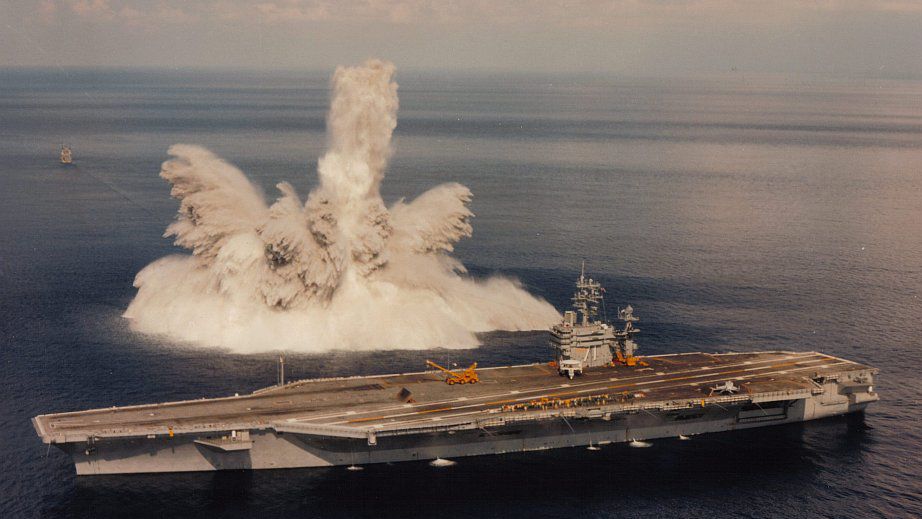Navy May Skip Shock Trials for Carrier Gerald R. Ford

The House Armed Services Committee may allow the Navy to put the first-in-class carrier Gerald R. Ford into service without shock testing, the practice of subjecting a warship to a series of explosions in order to test its combat resilience. Omitting shock trials could help the Navy to deploy Ford as early as 2020, which would fill gaps in the fleet and allow the carrier Ronald Reagan to rotate out of operation for maintenance.
The House Armed Services Committee is considering removing the requirement for shock trials that was inserted in last year's National Defense Authorization Act, the annual military funding bill. Without this text, the Navy would have the discretion to perform the tests or omit them.
The Ford completed builder's and acceptance trials last month, and the Navy formally took delivery on June 1, about 15 months behind schedule. Despite the Navy’s acceptance, the Ford cannot yet launch fully loaded aircraft: her electromagnetic aircraft launch system has had problems in testing and is not certified to launch fighters with wing tanks. Acting Navy Secretary Sean Stackley told the Senate Armed Services Committee last week that the tank issue was a software problem and would be fixed soon.
The Ford is the first of three ships in her class, and she cost about $2 billion more than planned. At a total price of $13 billion, not including research and development, she is the most expensive ship of any kind ever built. The Government Accountability Office warned earlier this month that the next two ships in the class – the John F. Kennedy and the Enterprise – may not offer much in the way of cost savings over the Ford, a ship that the office has long derided as an example of "less for more" procurement.
